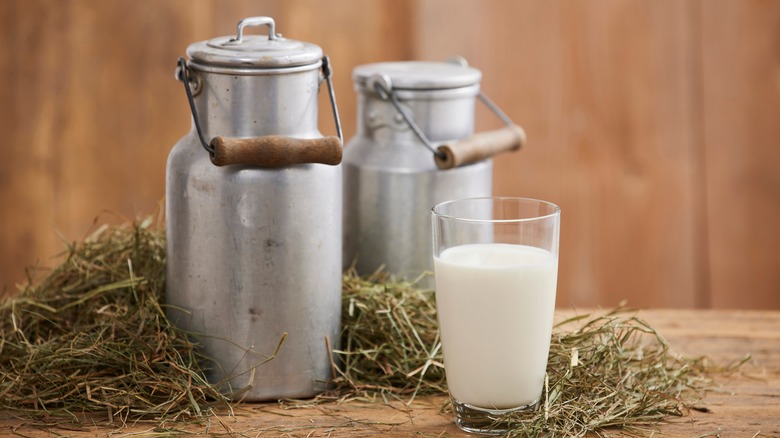Why People In Victorian England Added A Poisonous Acid To Milk
The history of food is fascinating and strange. So much so that if a television show was made detailing a chapter of food history each season, hundreds of us would tune in just to see the history of the Italian happy hour or find out why the origin of the Savoy cabbage's name is highly debated. Food is weird, messy, and its history can be downright concerning at times. And there are fewer times and places in history when food was at its most concerning than in Victorian England.
For some context, from 1837 – 1901, those who lived in Britain at the time were serving and being served dishes like jellied eels, bloater paste (paté cured herring guts), flour soup, slinks (cow fetus), donkey's milk, boiled calf's head, saloop (made with sassafras, steaming milk, and sugar), and egg wine (via Kat Devitt). Not to mention the horrific, cannibalistic, and disrespectful practice of consuming the flesh of mummified Egyptian bodies, thus destroying history and desecrating cultural and religious items, as reported by Smithsonian Magazine. Needless to say, the people of Victorian England didn't have the best taste, and this is further exemplified by their drinking habits.
Using poison to cover up ... toxic milk
Safe food was non-existent until modern regulations were put in place, and hence, foul, spoiled, and rotting food was a huge problem in Victorian England. Many unsavory things like sawdust, chalk, and even sheep brains were mixed into bread, sugar, and milk. The British Library states that in addition to inedible items added to milk, the cows that produced the substance suffered from tuberculosis, diphtheria, brucellosis, and scarlet fever. They would then pass on these deadly diseases to any who drank their milk.
But this horrible milk plot kept thickening. BBC News reported that milk from 1882 was tested and found to contain none other than Boracic acid. This poison was purposefully added to milk to make it more appetizing. But instead, it caused nausea, vomiting, abdominal pain, diarrhea, and affected infants' nervous systems. While mildly toxic to adults, children were the ones consuming milk the most (via National Pesticide Information Center) and were far more susceptible. The History Collection explains that Victorians drank unpasteurized milk, which meant that it spoiled very quickly. But people of that era didn't know that the sour smell radiating from their cups meant that their drink was ruined, let alone that spoiled milk contained tons of harmful bacteria. Instead, they used Boracic acid to cover up the stench. This poisoned them with a toxic substance and allowed them to drink milk which basically turned deadly.

